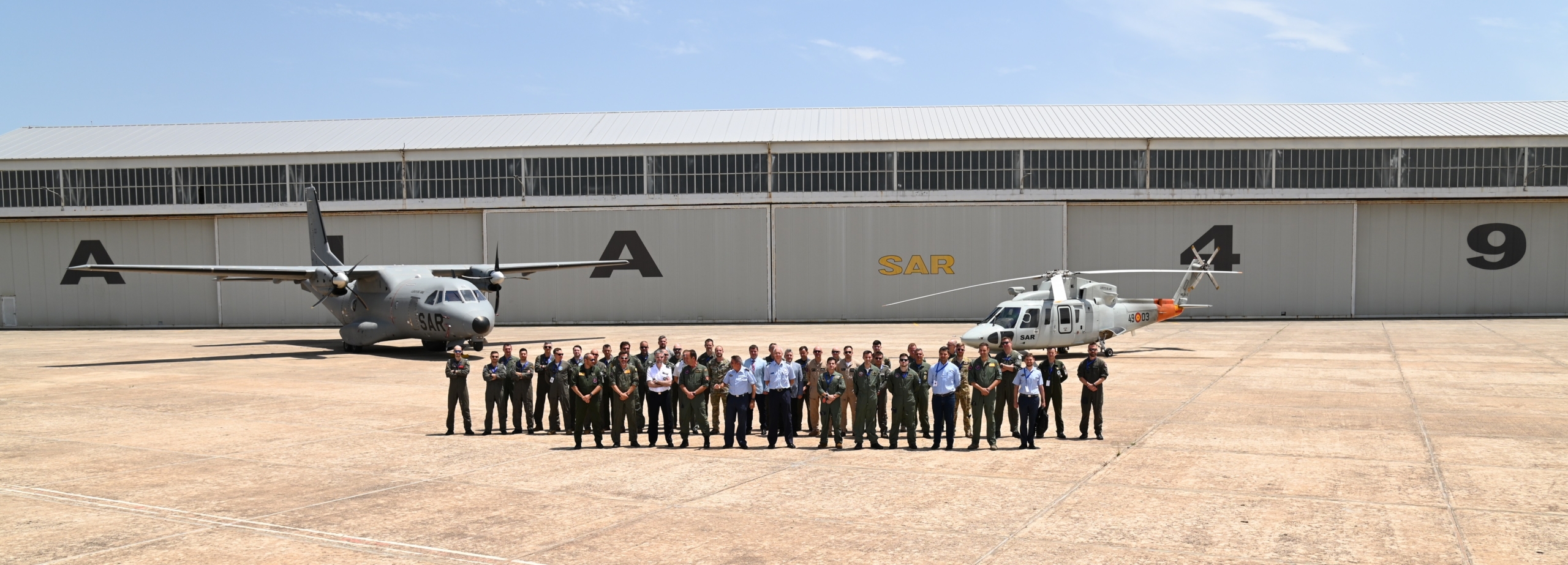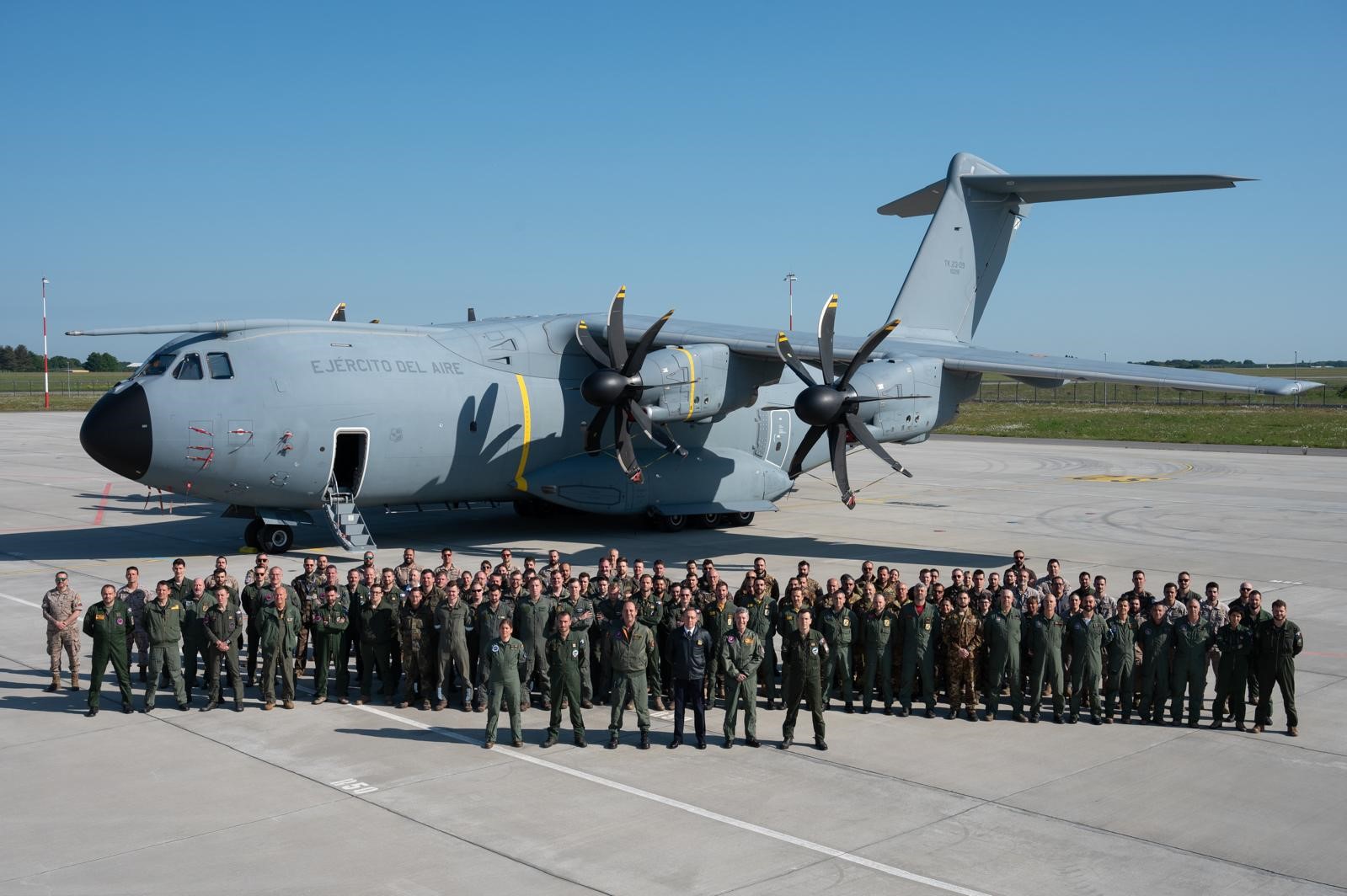His Majesty King Felipe VI visited on September 10th the National Component of the European Tactical Airlift Centre (ETAC) and the ETAP 25-3 course currently being conducted at the Zaragoza Air Base for the advanced tactical training of multinational transport crews.
The King was received by the Minister of Defence, the Secretary of State for Defence, the Chief of the Defence Staff (JEMA), and the senior leadership of the Air and Space Force, along with the Head of the CN-ETAC. His visit began with a meeting with all personnel participating in the course, composed of crews from Germany, the Czech Republic, Poland, Romania, Denmark, and Spain, which participates with aircraft from Wings 35 and 31.
Since its establishment in 2016 at the Zaragoza Base, this centre has been responsible, under the leadership and strong impetus of the Air and Space Force, for leading the tactical training of transport crews from the 14 European partners comprising the programme. Its objective is to enhance the tactical capabilities of transport crews in crisis scenarios through the use of advanced tactics and common procedures that facilitate interoperability.
The monarch’s visit continued with a briefing from the Head of the National Component of the ETAC on this European training programme, during which the importance of maintaining close ties and mutual understanding with European allies was emphasized to improve the crews’ capabilities in facing increasingly complex joint scenarios. Subsequently, the Director of the 25-3 course presented the project, highlighting Spain’s effort in providing equipment and personnel to support it.
Following the visit to the CN-ETAC facilities, His Majesty concluded his time at the air base by joining the crew of Wing 31 on board an A400M aircraft, conducting the third mission of the course.
The mission consisted of a tactical flight over the Pyrenees, Bardenas Firing Range, and Ablitas Aerodrome, where the King was able to witness firsthand low-level tactical flight and procedures to evade the air defense threat present in the scenario. This threat in the third mission consisted of a Mistral missile battery from the Army’s Field Artillery Regiment (RACA20) and BANS (Battlefield Anti-aircraft VShorad System) self-defense UV stimulators, alongside the use of SMOKEY SAM from the EADA simulating surface-to-air missile signatures.
The third flight mission concluded at Ablitas Aerodrome with the execution of an automatic parachute drop of a mixed Spanish-German patrol, followed by a tactical landing on an unprepared runway, during which an Engine Running Operation (ERO) was carried out, unloading a military vehicle without engine shutdown to minimize exposure time.
Once on the ground, with participation from the EADA, UMAAD Zaragoza, and the Spanish A400M aircraft involved in the course, a Non-Combatant Evacuation Operation (NEO) was simulated, similar to recent real scenarios such as those in Sudan or Afghanistan, providing the King with insight into the complex process required for its execution. During the NEO operation, a threat from two hostile vehicles identified by a PREDATOR system was simulated, forcing a change in the defensive posture of the aerodrome forces and a Show of Force flyover by two F-18s protecting the NEO operation under the control of the Paratrooper Sappers Squadron.
Since its inception in 2017, the ETAC has graduated more than 100 crews and 120 tactical instructors, accumulating over 4,000 flight hours, establishing itself as a European benchmark for advanced training of tactical airlift crews. This consolidates the Air and Space Force’s commitment to leadership in advanced aircrew training, both for transport and for fighter and attack roles through the Tactical Leadership Program (TLP) at the Albacete Air Base.
The visit of King Felipe VI has been an honour for this specialised unit and for the Air and Space Force, reinforcing the importance of ETAC as a platform for European defence cooperation and Spain’s commitment to maintaining European air forces prepared to respond to missions in demanding and ever-evolving operational environments.









